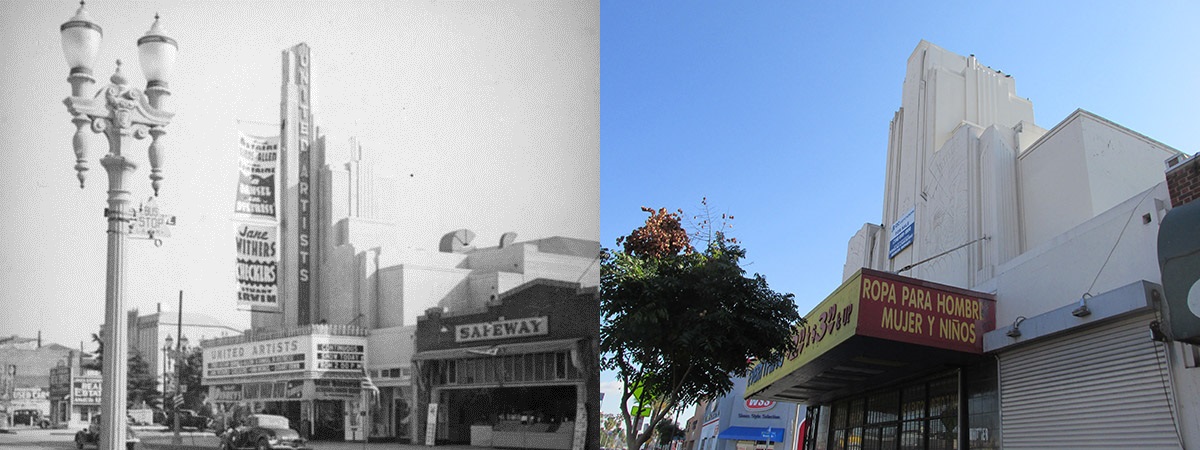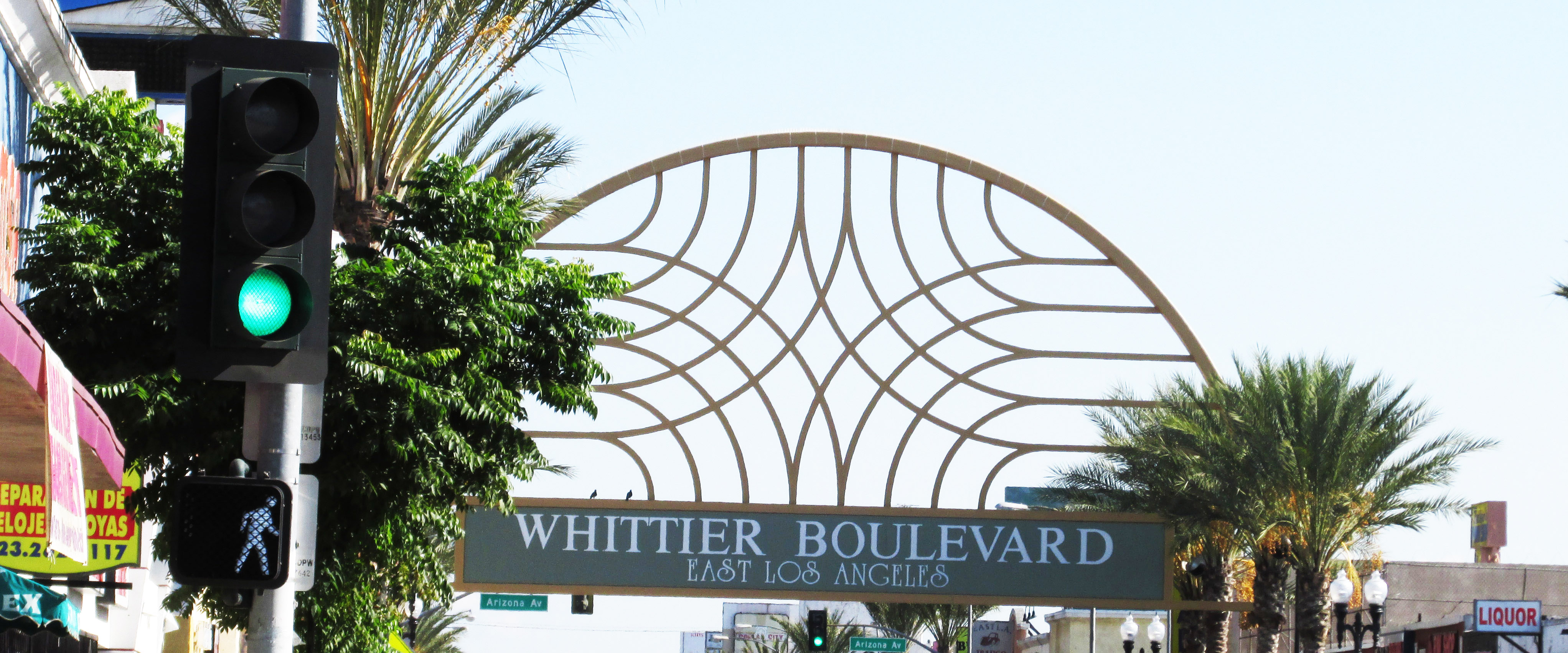East Los Angeles Residents Remember Whittier Boulevard Movie Houses
In the 1960s, Whittier Boulevard was the East Los Angeles destination for shopping, dining and seeing a movie, East Los Angeles native Vincent Lima recalls.
Throughout the last century, a number of historical movie houses have come and gone from the area’s main drag. Though many of the theatres have been demolished since closing, a number of the existing structures are still standing. They’ve been adapted for other uses, but a lot of the original framework, as well as the memories of earlier generations, remains.
Al Guerrero, an East Los Angeles native and self-proclaimed cinemaphile, remembers living right by the Center Theatre (4762 Whittier Blvd.), which had a “mom-and-pop” feel to it.
“I used to like going there because it was walking distance and as a little kid, I was able to go there on my own,” he said.
The theatre was known for its outdoor snack bar. Since closing, it has been turned into retail space.
The United Artists Theatre (5138 Whittier Blvd.)—renamed the Alameda Theatre in the 1980s—has also been converted to retail space, but retains panels with the words “unity” and “artistry” carved on them and is currently up for sale.
According to an online listing, the owners are asking for $1.95 million.
The listing reads: “Featured in the Warner Brothers production ‘Boulevard Nights,’ this property serves as a landmark for many locals in the community. With 91 feet of frontage on Whittier Blvd and over 16,000 square feet of interior, the Old Alameda Theatre boasts uncommon owner-user and creative opportunity in this area.”
 United Artists Theatre in the 1930s (Herman J. Schultheis Collection/Los Angeles Public Library) and in 2014.
United Artists Theatre in the 1930s (Herman J. Schultheis Collection/Los Angeles Public Library) and in 2014.
Guerrero also recalled seeing movies at the Boulevard Theatre (4549 Whittier Blvd.), later renamed the Huggy Boy Theatre after radio host Dick Hugg.
According to Guerrero, it was where all the neighborhood kids would go to see the martial arts films that were popular in the 1960s and 1970s. He jokingly referred to it as “a frenzy of fanboys,” recalling that the theatre would show multiple films back-to-back and people could stay for as long as they wanted.
But it was the Golden Gate Theatre (5176 Whittier Blvd.) that was revered as the premier movie palace in the area.
There were once retail and apartment buildings surrounding the theatre, but they were damaged by an earthquake in the 1980s and torn down in 1992. After closing, the theatre stood vacant for several decades.
Despite protest from community members, it was converted to a CVS Pharmacy in 2012. The Spanish Churrigueresque-style architecture of the exterior and interior was preserved.
But residents, such as Lima, still aren’t happy with what has become of the former movie palace. He appreciates the architectural preservation, but said the pharmacy makes it harder to discern the building’s former use and prestige.
“A young kid walking by probably doesn’t pay too much attention and he’s not going to learn the history of what happened on that boulevard,” Lima said.
At one time, ideas of turning the space back into a theatre or into a cultural museum of the area were proposed, but neither panned out.
“There’s a lot of history that the younger generations don’t even know about. There’s a lot of history that could’ve been kept alive,” Lima added.
Protests to prevent the conversion were also brought to the attention of the Los Angeles Historic Theatre Foundation, a non-profit organization that fights to preserve movie houses all over Los Angeles, but they were unable to help.“We were brought in as part of the coalition later in the game, after some of the design choices had already been made,” LAHTF director Escott Norton said.
Norton added that he is disappointed with some of the choices made, such as the lighting inside because it does nothing to highlight the surviving interior architecture.
A number of other movie palaces including the Monterey Theatre, The Garmar Theatre, the Jewel Theatre, the Ivy Theatre, the Strand Theatre and the Royale Theatre also dotted the popular street, but have since been demolished or completely remodeled.
But no matter where on Whittier movies were seen, Guerrero said that going to the movies was very much a communal activity among the “close knit” communities of East Los Angeles while he was growing up and it acted as a window out of the area.
“It meant a connection to the rest of the world because traditionally, this community has been kind of marginalized and kind of separated from the rest of the city and the rest of the country, so these theatres played an important role in helping feel out and reach out,” Guerrero said.
He added that it gave them a “sense of what the rest of the world was like and what Hollywood represented as being the music, fashion and cultural norms.”
Though many people who grew up with the theatres would’ve liked to have seen all of them kept that way, Guerrero still appreciates the smaller attempts at preservation.
“Time has a way of covering things with a certain dust of forgetfulness and erases memories,” Guerrero said. “There’s those of us who treasure it and remember the value and the history, and it’s meaningful to us to see that little bit of architecture or that little façade or something that still remains because it brings back living memories.”

